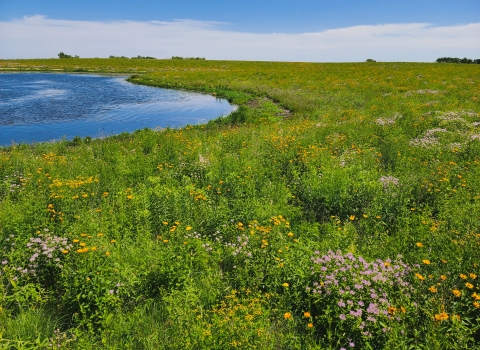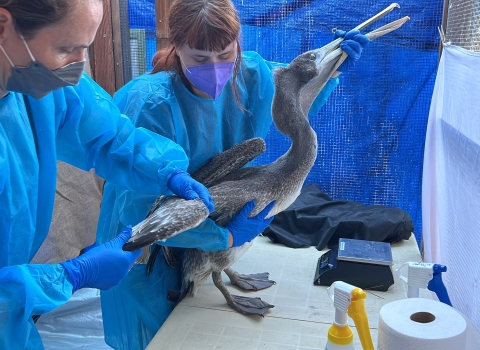DENVER – Thanks to the work of local landowners and partners at the City of Fort Collins Natural Areas Department and F.E. Warren Air Force Base, the once-threatened Colorado butterfly plant has been removed from the Federal List of Endangered and Threatened Plants by the U.S. Fish and Wildlife Service.
Since the species’ listing in 2000, the Service has partnered with ranchers; local, state and federal agencies; and private landowners to develop voluntary agreements to protect this unique plant’s habitat while continuing to manage private lands for agricultural purposes.
“The Colorado butterfly plant’s recovery would not have been possible without the strong conservation partnership between the Service, local landowners and local, state and federal agencies,” said Noreen Walsh, Regional Director for the Service. “By working together, we have recovered a once-imperiled plant species while maintaining the ongoing land management needs of our partners.”
After an extensive review using the best available scientific and commercial information, the Service determined that threats to the species have been sufficiently minimized or avoided. Additionally, new populations have been discovered since the time of listing, and most of the populations known at the time of listing are also stable. The minimization of threats, the discovery of new populations, and the determination of stable populations, along with strong local conservation partnerships, led the Service to conclude that the Colorado butterfly plant is no longer likely to become endangered in the foreseeable future. The Service will also be removing the critical habitat designation from 3,538 acres of land.
To ensure the plant is recovered into the future, the Service has developed a post-delisting monitoring plan that outlines monitoring for the species for at least five years following delisting.
The Colorado butterfly plant is a perennial herb endemic to moist soils in wet meadows of flood plain areas. This plant can be found in southeastern Wyoming, north-central Colorado and western Nebraska between elevations of 5,000 and 6,400 feet. The species is typically found in wetland habitats along meandering stream channels on the high plains. The plant prefers open habitat that is not substantially overgrown by other vegetation.
For a copy of the final delisting rule and post-delisting monitoring plan visit the federal register website.
The U.S. Fish and Wildlife Service works with others to conserve, protect, and enhance fish, wildlife, plants, and their habitats for the continuing benefit of the American people. For more information, connect connect with us through any of these social media channels: Facebook, Twitter, Flickr, YouTube, and Instagram.


